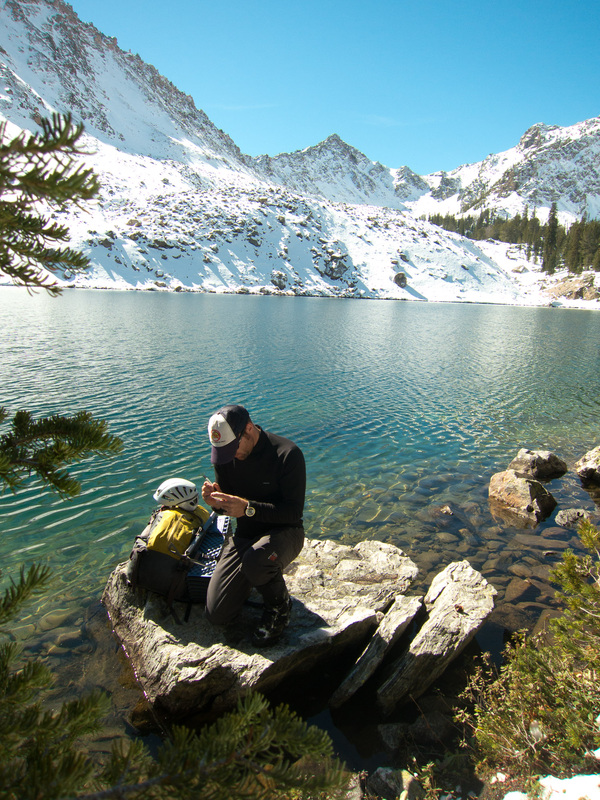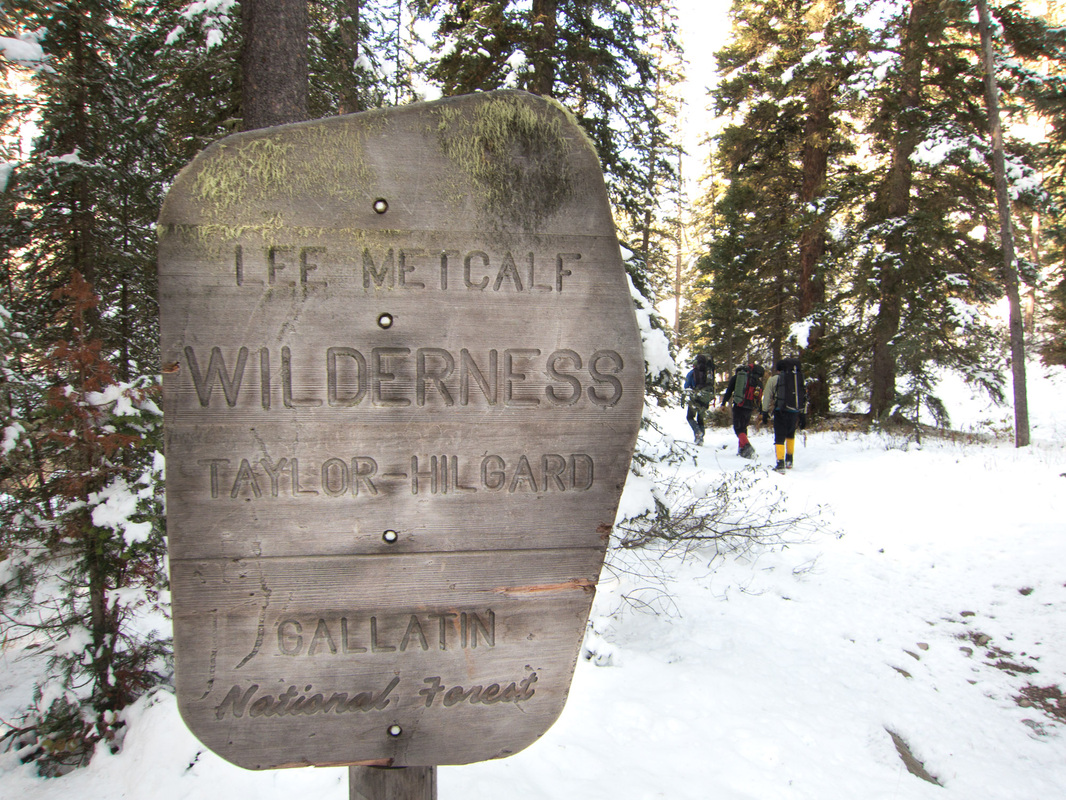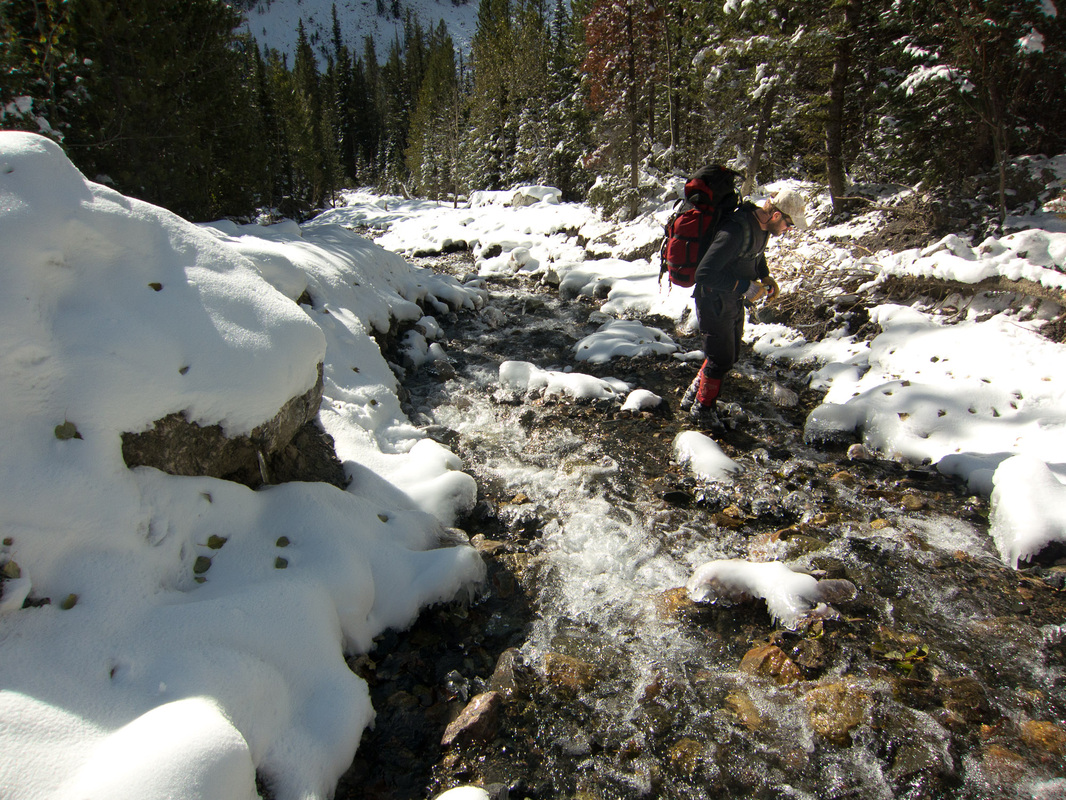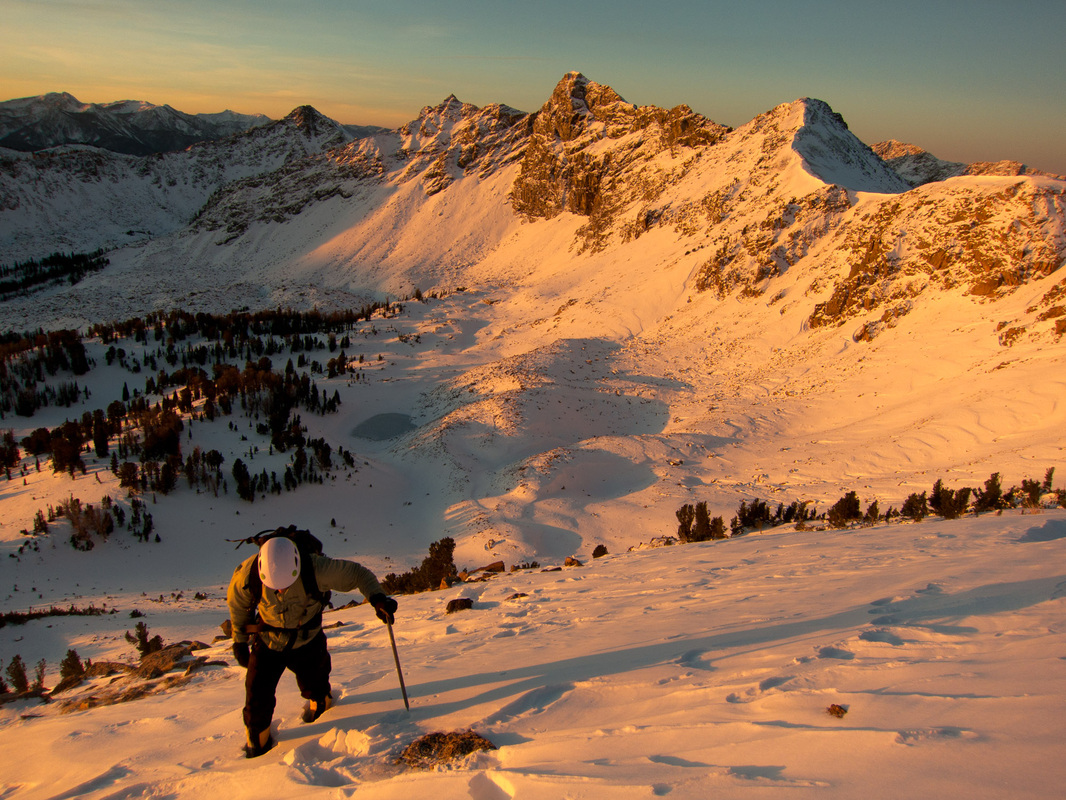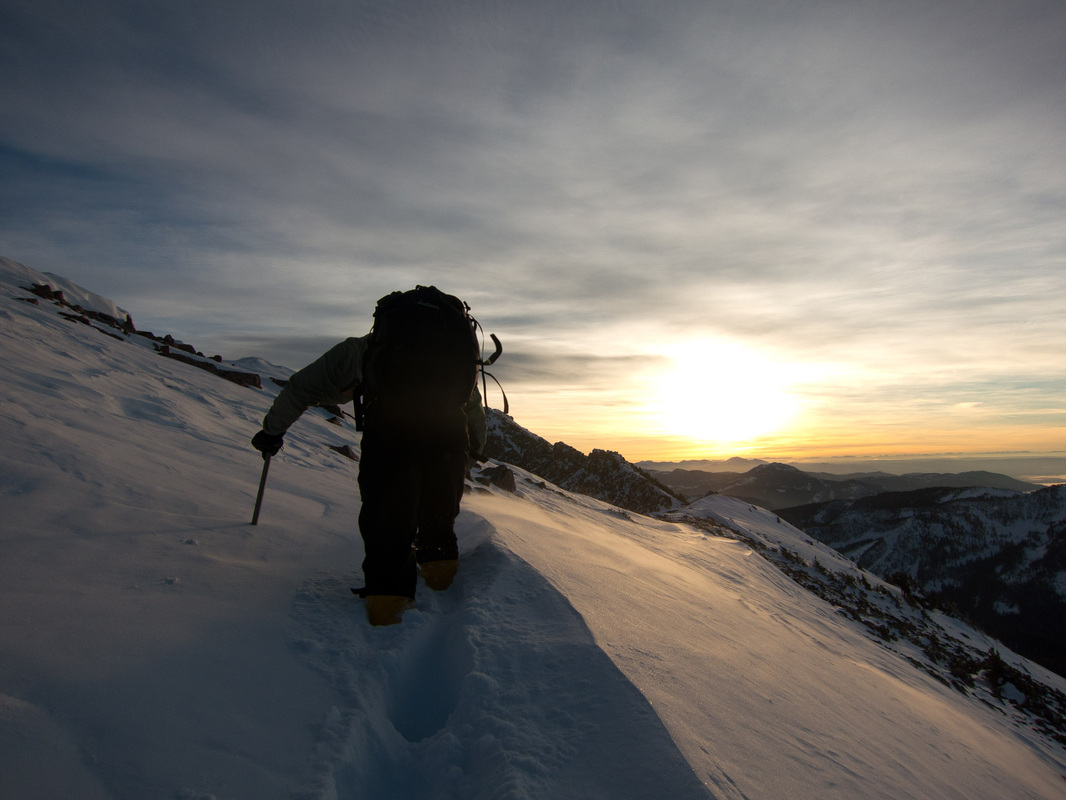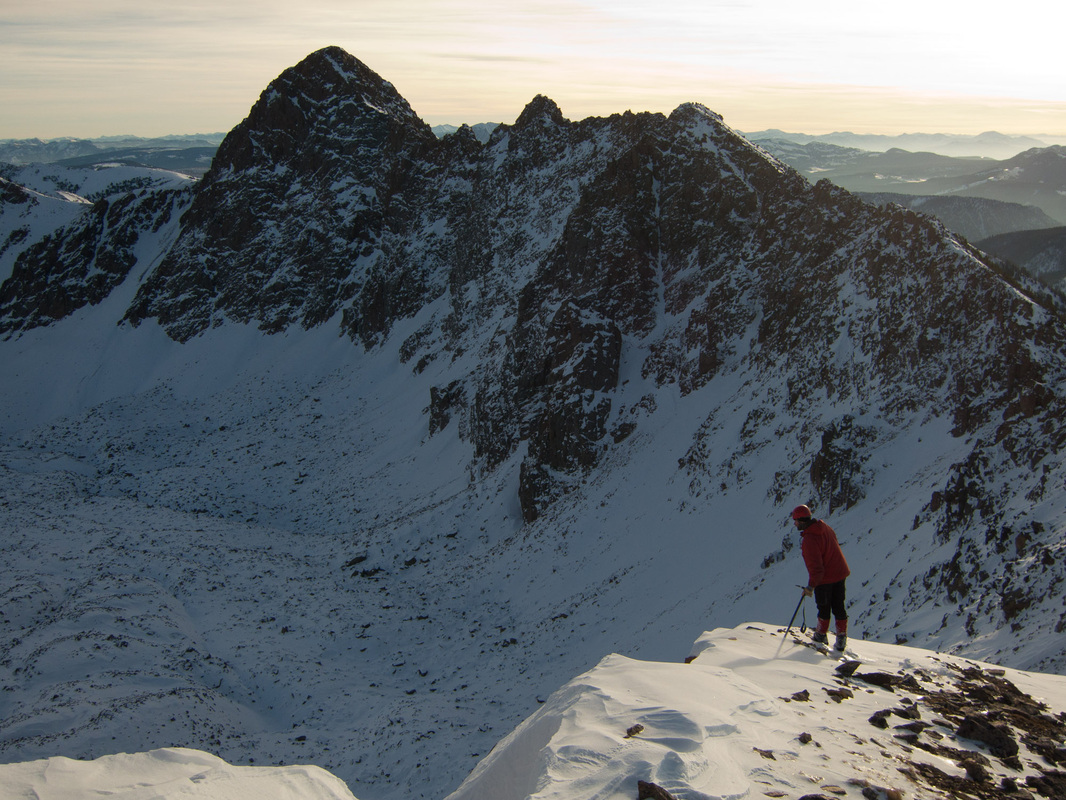Hardened Alpinists Don’t Complain
ASC’s newest staff member Mike Kautz joined the organization in September after several years working in Yellowstone National Park. Like many of us who have moved to Montana Mike was drawn here by the wild and mountainous backcountry. As he relates below, Montana is a place where weekend trips can feel like expeditions. These local mountains are still places we know little about and our explorations can contribute valuable data on everything from wolverines to diatoms.
From Mike:
Like many mountains in southwest Montana, the approach to Hilgard Peak begins by driving up a road better suited for a jacked-up pickup than the Subaru station wagon we are riding in. As our party of four slithers around snowy corners and bottoms out in frozen wheel ruts we bounce around the interior with kid’s toys, coffee mugs and car seat pieces.
We are not a group of hardened alpinists, though we wish we were. My brother and our friend Ed are new fathers who run their own businesses. They have not slept in months. Our friend Andy works in Billings where the air is embarrassingly thick for a mountaineer. I work at ASC and ride at the back of the pack in a weekly cyclocross race. But, we each love the mountains and the camaraderie of high places.
At the trailhead in the blue light before dawn it looks and feels more like February than October. Winter has come early to the high country . The snow is six inches deep at the trailhead and we are post-holing to our knees after a mile. As the sun rises the snow gets thick on top and slushy where it meets the ground. Halfway through the eight-mile approach our boots are soaked and heavy. “Hardened alpinists don’t complain about wet boots,” Ed says when I comment on the conditions.
We camp at 9,000 feet in eighteen inches of snow beside a lake ringed by unnamed peaks. Because the grizzlies are not yet asleep we hang our food after dinner and sleep with bear spray in the tents. The night is deeply quiet and dark, the air still and trees silent under the snow. By morning the temperature at camp is in the single digits and my summer-weight sleeping bag is feeling thin.
A little after 5am I hear Ed say, “My boots are frozen solid. I can’t get my feet into them.” I remind him that hardened alpinists don’t complain about frozen boots and begin trying to stuff my feet into my own cinder block boots outside the tent. As we begin climbing into the alpine zone above treeline it is easy to understand why Hilgard was not climbed until 1948, just five years before Mt. Everest. It is a massive peak with a moat of ridges, moraines and boulder fields.
We don’t make it to the summit. After climbing over the ridge into Hilgard basin we find over two feet of powder snow on top of miles of scree and boulders. Some steps we sink to the knee, others to the hip. Sometimes there is only a black void between boulders and our feet dangle in space while we flounder back to better ground.
It was disappointing to turn back before the summit, but on this trip I had another goal. In my pack I was carrying two small Nalgene bottles to gather alpine lake water samples for an ASC adventure science project on
diatoms. Diatoms are a phytoplankton that serve as a cornerstone of the food chain. They are an indicator of both climate change and water quality. One of ASC’s partner scientists is building a database of diatoms in Montana, Washington, Wyoming, Oregon and Idaho and relies on samples collected by outdoor enthusiasts. These samples have yielded nearly two-dozen new species of diatoms in only two years.
Back at camp I chopped a hole in the ice of the lake and collected a sample of the sediments from the lake bottom. I marked the GPS coordinates of the sample site and began breaking trail for nearby Avalanche Lake. There were some protests about the detour from my companions, but I reminded them that hardened alpinists are often also scientists and explorers.
Avalanche Lake was worth breaking trail to reach. It is rare to see the combination of an unfrozen emerald alpine lake and high peaks heavy with snow. I took a sample from Avalanche Lake and recorded the coordinates. Without a sample to collect I doubt we would have taken the time to visit the lake. We still had eight miles of snowy trail, a long drive, and work the next morning; plenty of reasons not to go. The detour, though, is now one of the most vivid memories of the trip.
Science and exploration are companion expressions of human curiosity. The questions we ask when we are outside, what lies over the ridge, how do grizzlies spend their lives, what does sediment of an alpine lake tell us, are often the same ones scientists ask in their work. Those who love the outdoors often wonder how they might give back to the places they love and contribute to their conservation. The work ASC does to pair adventure and science is an ideal outlet for this desire to help.

